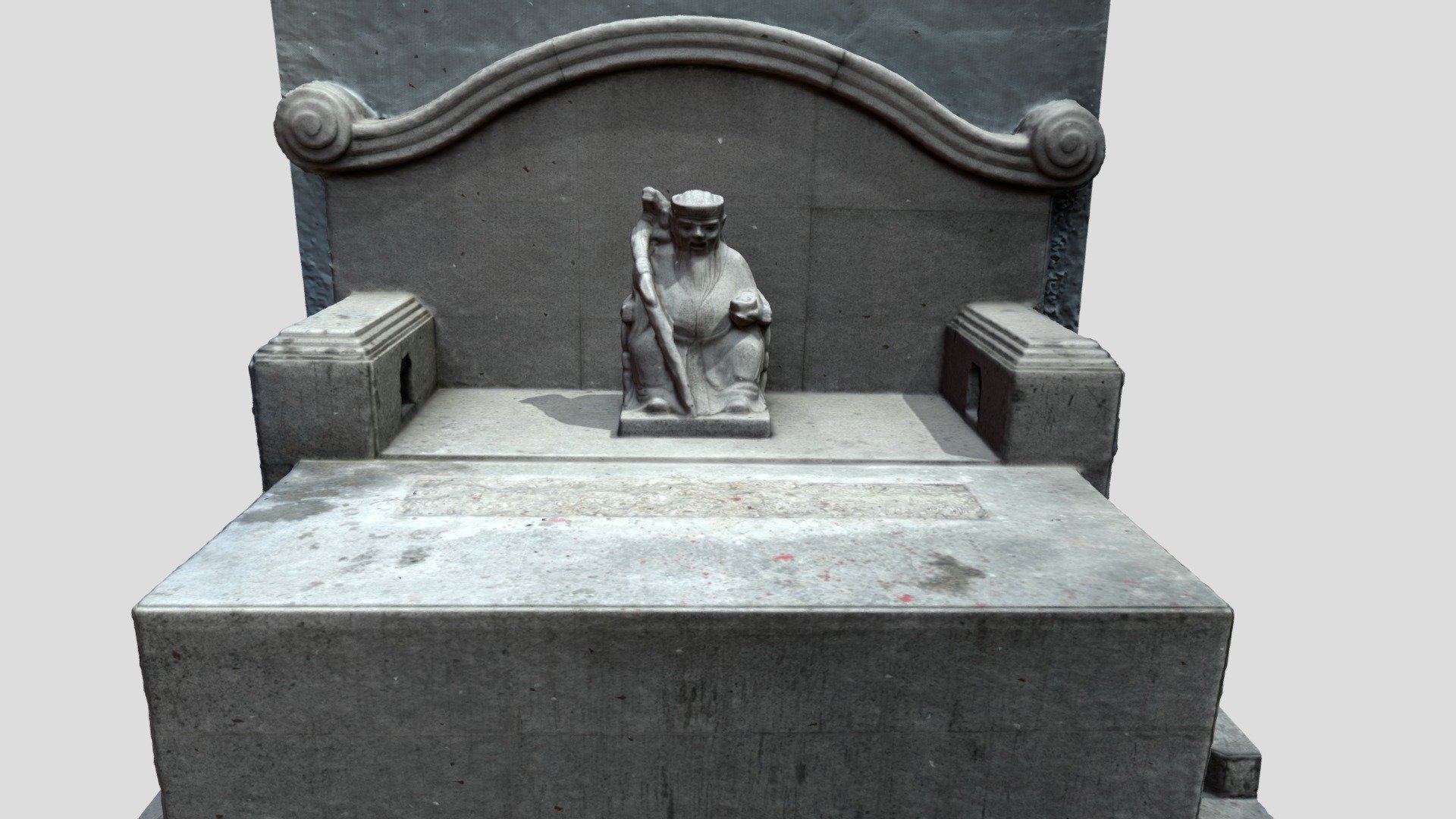
土地公(罅些喇提督大馬路)
sketchfab
Ancient China's mirror-like funeral homes are a testament to the country's deep-rooted reverence for tradition. Outside the Liang Huo Funeral Home, two imposing land gods sit atop their thrones, with one bearing an eye-catching red inscription that reads "Ben Fang Di" in bold characters. In contrast, the other land god stands silently on the side of the road, its stone sculpture exuding an air of tranquility as it sits majestically on a stone chair, its presence eerily reminiscent of traditional Chinese tombstones. The ancient poem from Shi Jing, or The Book of Poetry, describes the construction of a grand altar in the new city of Zhou: "Then build a mound of earth." Despite the passage of three millennia and countless changes, today's "mound" has been reduced to an ordinary commoner's tombstone. This shows just how deeply rooted the tradition of social temples is in Chinese culture. In ancient China, life, death, faith, and taboo were all intricately linked to a small patch of earth. As The Book of Poetry says: "The gentle soil that nourishes me, I must repay with gratitude." In nature, humans would dig holes to shelter themselves from the elements, and after death, their bodies would be covered in dust, symbolizing the cyclical process of life and death. The book continues: "After a hundred years, I will return to my ancestral home," singing the praises of reunification with one's ancestors in the afterlife. Below ground, people began to believe in an otherworldly realm - as explained in the Zhuan Ming Shu: "Ancient people dug holes and lived inside them, opening up the middle to let light in, and when it rained, water would flow into the hole, calling it 'zhong lou.' This referred to the location where spirits resided, which could be worshipped both at home and in the country." During the Zhou Dynasty, the royal ancestral temple and social altar were on equal footing, with worship rituals and ancestor veneration practices merging and evolving over time. In ancient times, temples honoring ancestors used wooden tablets made from high-quality wood, referencing the phrase "wood returns to its root, symbolizing a beginning and an end." This was done in opposition to worshiping corpses. Social altars also used top-grade wood, with many dynasties citing the example of Shang Yang's social altar being built using cypress trees as recorded in the Huai Nan Zi: "The royal ancestors of the Xia Dynasty used cypress for their social altar." Tombstones and social altars share many similarities. For instance, the tablet bearing the name of the tomb owner is similar to the land god's single-character inscription, which reads simply "she." How could it be any less ordinary than that of common people? The reverence for sacred trees led the Han Dynasty to directly name social altars after the types and locations of nearby plants - such as the Pine East Altar or Chestnut North Altar. However, the rare sight of undecaying sacred trees is a rarity, whereas stones are abundant and eternal, hence "the tablet of the gods is always made of stone." This practice dates back to the Zhou Li, where stones were used as substitutes for wood, and by the Tang Dynasty, when the custom of thick tomb construction became widespread, the culture of stone epitaphs flourished even more. By the Ming Dynasty, it was decreed that all commoner tombs must have stone tablets, so social altars naturally followed suit. Wooden plaques would weather with the seasons, cracking and merging in a cycle of growth and decay, while existing amidst life, fire, and ashes. This tested the persistence of descendants in their duty to care for their ancestors, protecting them from rotting wood. However, stone tablets and statues remain cold and lifeless, devoid of vitality, devoid of moisture, and unable to reveal the process of spiritual cultivation that nourishes all things, or stir the minds of ordinary people who are mired in mundane concerns about fame and fortune? Today, when people visit the Thoughtful Garden in front of which stands a stone-carved land god, it's likely they don't feel the same stirring emotions as The Book of Poetry's author, who was moved to devotion by "the thorns at the tomb door," or "the reeds that sway in the wind," and other mystical natural wonders that captivated their hearts.
With this file you will be able to print 土地公(罅些喇提督大馬路) with your 3D printer. Click on the button and save the file on your computer to work, edit or customize your design. You can also find more 3D designs for printers on 土地公(罅些喇提督大馬路).
